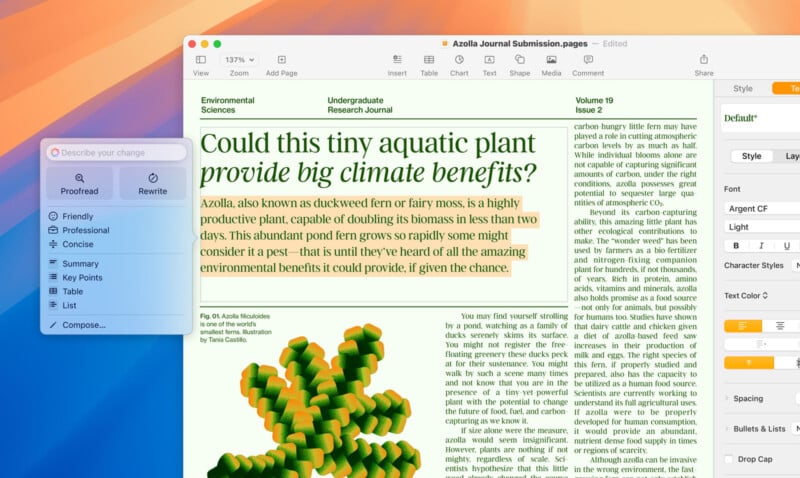![]()
Apple’s busy week of announcements continues. Following the M4-powered iMac on Monday, the M4 Pro’s debut in the redesigned Mac mini yesterday, and the new MacBook Pro notebooks today, Apple’s M4 chip family has taken shape, now comprising three chips: the M4, the M4 Pro, and the M4 Max.
This pattern follows the same one Apple took with its M1, M2, and M3 families, providing users with various options to meet varying needs. Each M4 chip has some things in common, though, including being built on second-generation 3-nanometer technology and featuring a more powerful Neural Engine to address the computational demands of Apple Intelligence, which arrived to Mac earlier this week, too.

The CPUs across the M4 family feature the world’s fastest CPU core, per Apple, and promise “the industry’s best single-threaded performance” alongside significantly faster multi-threaded performance. The M4’s GPUs build upon the M3’s breakthrough graphics performance, offering up to two times better ray-tracing performance.
The M4 Pro and M4 Max also enable support for Thunderbolt 5 on Mac for the first time in the M4 Pro Mac mini and the new MacBook Pro models. Thunderbolt 5 delivers up to 120Gb/s data transfer speeds, more than double those of Thunderbolt 4.
![]()
M4 Pro and M4 Max promise significant gains in terms of memory bandwidth as well. The M4 Pro supports up to 64GB of fast unified memory and 273GB/s of memory bandwidth, a 75 percent increase over M3 Pro and double the bandwidth of any current AI PC chip.
![]()
![]()
M4 Max, on the other hand, supports up to 128GB of unified memory with bandwidth speeds up to 546GB/s, four times the bandwidth of contemporary AI PC chips. Apple notes that the M4 Max’s memory bandwidth enables developers to interact with large language models that have up to nearly 200 billion parameters.
![]()
![]()
The new flagship — at least until an expected M4 Ultra arrives at some point — M4 Max chip includes two video encode engines and a pair of ProRes accelerators, making it “the ultimate choice for video professionals.”
![]()
Zeroing in on the M4 family’s core performance, the base M4 features up to a 10-core CPU featuring four performance and six efficiency cores. The M4 is up to 1.8 times faster than the M4. It also features a 10-core GPU, which doubles the speed of the original M1’s GPU. As for its Neural Engine, that sports 16 cores. The M4 supports up to 32GB of unified memory and offers a memory bandwidth of 120GB/s. Another notable improvement over the base M3 is that the new chip supports up to four Thunderbolt 4 ports and the M4’s display engine can power two external displays in addition to a built-in screen.
![]()
![]()
The M4 Pro has up to 14 CPU cores, including up to 10 performance cores, making its CPU up to 1.9 times faster than the M1 Pro and up to 2.1 times faster than the latest AI PC chip. The M4 Pro features up to 20 graphics cores, delivering double the graphics performance of the base M4.
As for the M4 Max, it has up to a 16-core CPU (12 performance and four efficiency), which is up to 2.2 times faster than the M1 Max’s CPU and up to 2.5 times faster than competing AI PC chips. The M4 Max goes for broke in the graphics department, offering up to 40 GPU cores that are up to 1.9 times faster than the M1 Max in terms of graphics performance and up to four times faster than competing AI PC chips. “So heavy workloads like de-noising RAW footage in DaVinci Resolve Studio can now run in real-time,” Apple says.
“Apple silicon has taken the Mac to unprecedented heights, and the rapid pace of innovation continues with M4 Pro and M4 Max,” says Johny Srouji, Apple’s senior vice president of Hardware Technologies. “With the world’s fastest CPU core, immensely more powerful GPUs, and the fastest Neural Engine ever, the power-efficient performance and capabilities of the M4 family extend its lead as the most advanced lineup of chips in the industry.”
Image credits: Apple
